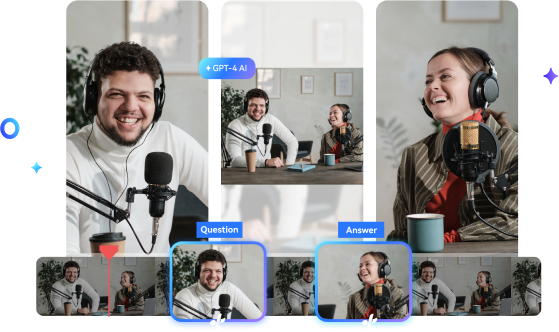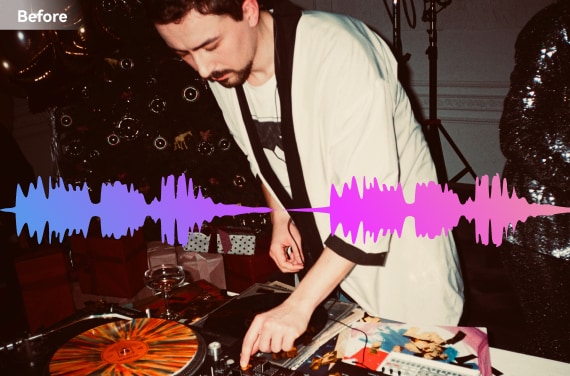


Transform Long Videos into Short Ones Instantly






audio or video file.


Just select specific types for precise noise reduction. Remember to enhance your vocals.


Taking steps to eliminate noise during the recording process can help ensure that the audio is as clean as possible from the outset, making any subsequent noise reduction processing more effective and less likely to impact the quality of the audio content.
Find a quiet location to record your podcast, away from traffic and other noise sources. If possible, record in a room with sound-absorbing materials such as curtains or carpets to help reduce echoes.
A good quality microphone can help reduce background noise and capture clear audio. Look for a directional microphone that records from the front while minimizing sound from other sides.
Try to breathe quietly during the recording, as heavy breathing can be recorded by the microphone and distract from the podcast content. Take deep breaths before you start speaking, and exhale slowly while speaking.
Be mindful of any clothing or accessories that might make noise during the recording. For example, avoid wearing jangly jewelry or rustling clothing that could be picked up by the microphone.
A pop filter is a screen or mesh that is placed in front of the microphone to help filter out unwanted noise. It can help reduce plosives and other harsh sounds that can occur when speaking into a microphone.
Try to lower the noise level by adjusting the the recording equipment's sensitivity. Remember to listen to the recording a few times to ensure the recording quality meets the requirements.

Noise Reducer
-
?
Is removing background noise from a podcast recording always necessary?
It depends on the severity of the noise and how it affects the overall quality of the podcast. In some cases, a small amount of background noise may not be noticeable or distracting, while in other cases, it may be necessary to remove the noise to ensure that the podcast is clear and easy to listen to.
If you want to preserve some of the noise to restore the sense of reality in real life, you can also enhance the human voice appropriately. It allows your audience to fully hear and understand your main content. -
?
What are common sources of background noise in podcasts?
Some common sources of background noise in podcasts include HVAC systems, traffic, wind, reverb, and hiss. You can try Media.io's Noise Reducer to remove these annoying noises. Meanwhile, try to enhance your voice with it and bring your podcast to a professional level.
-
?
How can I remove background noise from my podcast?
There are several ways to remove background noise from a podcast, including noise reduction software and editing noisy sections.
For the automatic removal of various noise types and to enhance the clarity of voice in your podcast, we highly recommend using Media.io's Noise Reducer. This powerful tool effectively eliminates background noise and ensures your podcast audio is optimized for an enjoyable listening experience. -
?
Are there any drawbacks to using noise remover?
While noise reduction software can be effective, it can also remove some of the desired audio content besides background noise. This can result in a loss of clarity and quality, particularly if the noise is loud or pervasive.
So, you can use Media.io Noise Reducer to remove noise while enhancing human voice, avoiding the loss of your important podcast content. -
?
What should I do if I can't remove all the background noise from my podcast recording?
If you can not remove all of the background noise from your podcast recording, you can try to minimize its impact by adjusting the volume levels, applying EQ, or using other post-processing techniques to improve the overall sound quality. Also, you can use Media.io to enhance your vocal in the podcast, attracting listeners' attention and retaining a particular sense of reality.



